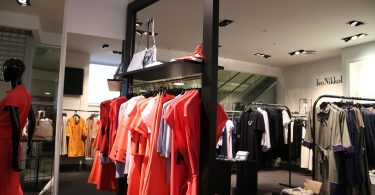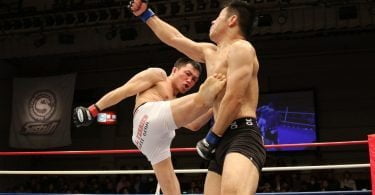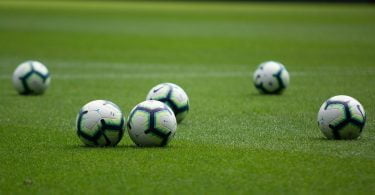With the blurry impression of Royal Albert Hall framing the orchestra, a towering organ behind it, the musicians take their place. It is a smaller ensemble at first, for Haydn’s Symphony No. 85 in B flat major, also known as ‘La reine’ for its famous fan, Queen Marie Antoinette. The tuning of the string section and wind instruments commences harmoniously, but some late arrivals cause laughter in the audience. All are applauded, especially as the lights dim with the arrival of tonight’s conductor, John Storgårds.
The string section features violins, violas, cellos and basses: not quite the traditional string quartet composition, but close enough in resemblance to the larger Parisian orchestra that was available to Haydn at the time of composition, estimated to be 1785. They begin the Adagio gently, with Storgårds coaxing out the sounds. Little by little the remaining smaller wind section contributes, with the oboe particularly shining after a slight minor passage. Storgårds is like a puppet master, shaping and directing his charges. The woodwinds especially underline the melodies of the string instruments, whereas the horns stand out instead.
The second movement is titled ‘Romance’ by Haydn, and lives up to its name. According to music scholar H. C. Robbins Landon, this slow movement is composed of variations of a French folk tune ‘La gentille et jeune Lisette’ (The nice and young Elisabeth), considered evidence that this work was composed originally for the Masonic Loge Olympique according to BBC Radio 3’s Lindsay Kemp.
‘Romance’ starts tenderly with strings only, as violins and violas exchange with another. The flute chimes in before the full orchestra sees tension rise in the vehemence that they play, although resolution comes quickly, with repetition where the horns replace the flute.
By playing the melody in minor the tension arises in this piece, Storgårds lifting and beckoning sound, then quickly hushing it. In this phrase especially the cello and bass melodies round out the sound richly. With the flute’s melody entering, the lilting birdsong lifts the mood, resolving the tension with its embellishments. In the ritardando you find the playfulness that earns the movement its name, as well as the loud chords, like a prank, between the soothing volumes.
It’s that time of the year again! #Proms2015 pic.twitter.com/37A7DMyKT9
— Toby Bryans (@tobybryans) July 21, 2015
A poetic aide
The Menuetto, the shorter movement, is rousing, like a hunting song with its strong melodic feature of horns. This movement focuses strongly on the wind section leading the strings in turn, with the conductor alternating between sweeping and pacing the musicians. The finale starts rapidly with strings and bassoons leading a chase between high and low, repeatedly presenting conflict and resolution, with Storgårds egging them on, as if indignant yet mediating. While the Presto was fierce, furious even in comparison to all preceding, it still seemed somewhat muted.
During the intermission the percussion is set up centre stage for Colin Currie’s performance of ‘into the open…’, the world premiere of HK Gruber’s 2010 piece. Taking notes on this piece proves difficult, with such a frenzy between the instruments and their players. The use of tones unassociated with orchestral pieces, such as gongs and cowbells lead to the building of tension in their dissonant chords.
An understanding of H. C. Artmann’s poem, which shares the title of this piece, aids in making sense of what we hear: escape and closing in on the escape. Paul Griffiths, author of Modern Music and After, puts it this way: “The ambiguity is present in the music […] between the executed rhythm and the background pulse, between safety and unsafety in the harmony”. The percussion always is lighter on its feet than the orchestra, like a chase in a film.
There is even a certain resemblance in the soundscape we hear, like clashes against objects in the way of the escape and the pursuers. Other musical associations bring up the Sims shopping music, and the songs that come free with Windows Vista by Aisha Duo in the calmer phases. Everything swells in a grand manner, till the Asian-sounding gong brings all to a rest.
Currie changes stations to the tuned timpanis, almost like he is testing out the waters. The harp is plucked, chasing the percussion, and chased in turn by the rest of the orchestra, larger than for the Haydn composition. There are swells and lulls, the swells growing with every repetition. Especially the brass winds’ presence domineers over the strings and percussion with menace. At times the instruments are beholden to Currie and the pace and melodies he dictates, at times they are independent. There is another break as he moves to the cajon.
Gruber’s piece becomes a true race with the speed of Currie’s patter. Due to the lack of tonal difference in the cajon it more contextualises the pace of the orchestra. Currie switches, like a madman, to the bongos, playing them likewise. However a calm washes in with the strings winding down the tension, as the piano holds its own in a melody. The way the percussion elements skitter about in this piece are reminiscent to a child in a tantrum, yet everything underneath is planned meticulously as dissonant chords mix with a soundscape from the percussions that is strangely harmonious.
Clinks, pandemonium as the tension rises, and pauses dance around each other uneasily, with the percussion sometimes pacing the other instruments, at other times playing in its own rhythm regardless of the orchestra surrounding it. Sometimes the last sound of the instruments hang uncomfortably in the air during the pauses. Yet it all comes to a rising frenzied build with gongs joining in, with an absolutely unexpected finish. During the bows, Gruber is beckoned on stage, falls to his knees before Currie and they share a hug before he brings all together again for further bows.
It is only later that I realise there are two harps on stage, so seemingly decadent. It is difficult to tell when the second harp appeared – if it was present for the Gruber piece already. The richness of sound that ensues in Stravinsky’s 1911 version of Petrushka however must benefit from the additional instruments – more percussion, more wind instruments and more strings as well!
Having previously never seen Petrushka not performed as a ballet it is disorienting not to have the dancers to interpret the music into a story, and yet listening closer takes you into a bustling marketspace, as the instruments herald new arrivals to Storgårds waving his conducting baton. With the introduction of a glockenspiel the various acts of the Shrovetide Fair are introduced. The drum rolls announce the beckoning to the puppet show. We soon thereafter find ourselves in Petrushka’s Cell as the piano patters up and about, then dribbles down in its arpeggios, as Petrushka examines his room and expresses himself.
Drumrolls being the markers of the beginning of a new tableau, they always seem menacing, and in the Moor’s Quarters the seeds are sown for this feeling to be rewarded. At first the melodies are sweet, with especially the trumpets chiming in for the brass instruments as string instruments wind down in minor. The wood winds pick up with the bassoon and flute, and there is a lightness in percussion through the addition of cymbals. However things go awry with the pauses introduced, and as play becomes more hesitant. Somehow underneath it feels wrong, discordant.
A perfect balance
The chords become alarming, in accordance to what must be the Moor discovering Petrushka spying on him and the Ballerina, the ballet’s love triangle. Petrushka is chased out of the quarters of the puppets into the open in the fourth scene, where the visitors to the Shrovetide Fair are shocked at these toys coming to life, only to be reminded by the Puppeteer that this is not so. In the ballet however it is questionable whether the Puppeteer was correct in his conclusion, as Petrushka’s ghost looms above him.
This return of the Shrovetide Fair sees a reminder of the melodies in the first tableau, making use of the same instruments as before and building sounds with layers of brass, woodwind and string instruments in major. The First Chair shows how the intensity is increasing, as he leans into the tension-building of the violins and violas. Especially the brass instruments again strike somewhat sinister notes, and the trumpet strikes a holding note as everything around pauses. The return to lightness has an added nuance of sadness, and the scene ends on a surprise plucked string instrument phase.
An odd experience without context, Petrushka is familiar to others entirely without the dancing. However this night was still a full success, with the four tableaux of Petrushka contributing the most rousing act, even after Currie’s performance of Gruber’s piece. The fact that it ended in such a minimalist way was the perfect bookend to the night which started with Haydn’s comparatively impactless but also more harmonious compositions.
Prom 5 is available to listen again for up to 30 days on the BBC iPlayer, and all Proms are broadcast live on Radio 3. Prom 5 will also air on BBC Four on 6 August.
What do you think of this Prom? Have your say in the comments section below.








